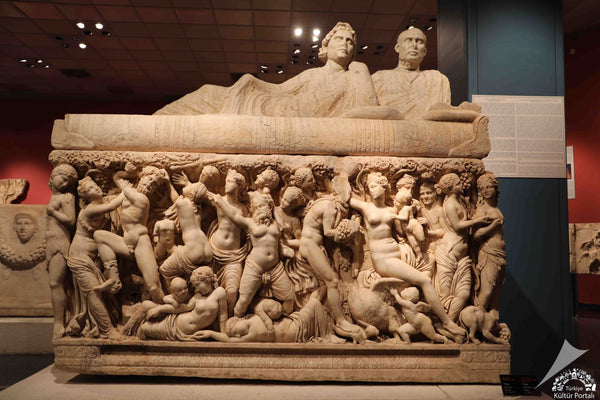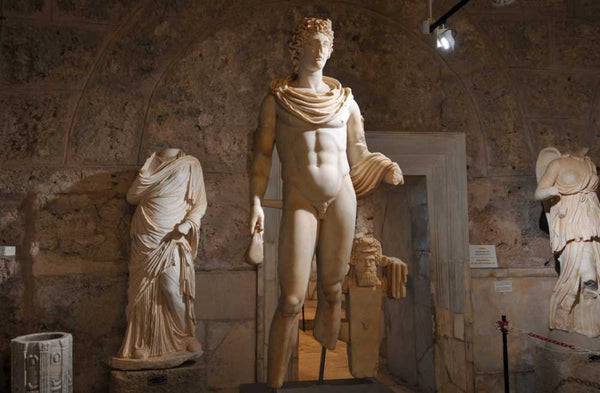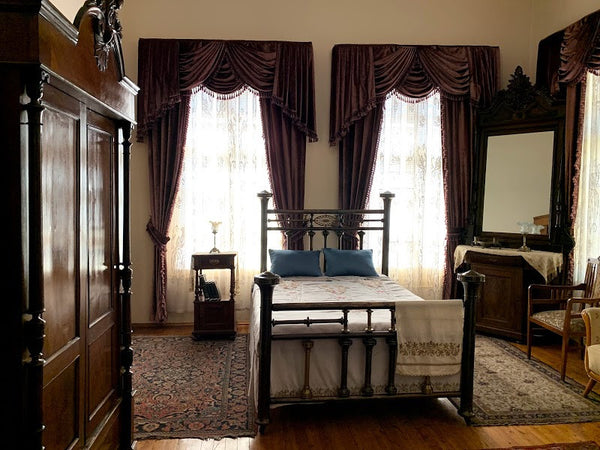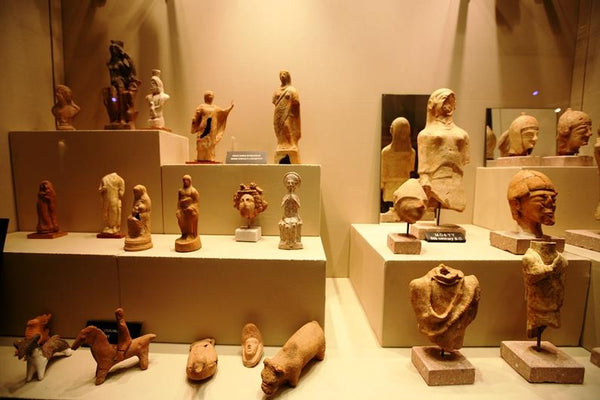Antalya, a pretty place in Turkey by the Mediterranean sea, is well-known for its beautiful beaches and green views. It also has a lot of history and culture shown in its many museums. These museums let you see what life was like in the past, with things from the old times like when the Romans, Byzantines, and Ottomans lived there. Each museum in Antalya has a different story to tell, with things like nice pictures made from small pieces of stone, statues, and fancy jewelry. It lets you feel like you're back in time, seeing how smart and artistic people used to be. Whether you like history, art, or just learning new things, Antalya's museums have interesting things to enjoy.
Antalya Museum
The Antalya Museum witnesses a period ranging from the Lower Paleolithic Age to the Roman Period, where sculptures from Perge Ancient City dominate other artifacts. Dedicated to three significant Mediterranean ancient civilizations that lived within the boundaries of Antalya - Lycia, Pamphylia, and Pisidia, the Antalya Museum received the "European Council Museum of the Year" award in 1988.
Founded with the great effort of the teacher Süleyman Fikri Erten, the museum emerged from the idea of protecting historical artifacts from occupying forces during World War I. Fikri Bey, in 1919, applied to the Antalya governorship, appointed himself as an honorary Antiquities Officer, and initially gathered artifacts in the center to establish the museum.
Established in the Alaeddin Mosque in Kaleiçi in 1922 and moved to its current building in 1972, the Antalya Museum spreads across a huge area of thirty thousand square meters. Featuring 14 exhibition halls, a children's section, outdoor galleries, and a garden, the museum stands out.
The exhibits include collections of natural history and prehistory, sculptures of gods and emperors, artifacts related to burial customs, coins, mosaics, and icons. Numerous rescue excavations in the region and site landscaping are also carried out by the Antalya Museum. Most of the ethnographic items in its collection were obtained from local excavations, with a significant portion of the extensive ethnography collection depicting Ottoman culture.
The Antalya Museum is open every day. It shows you about the old times in the Mediterranean region. You pay 15 Euros to go in. You can look at lots of things from ( AM to 6 PM. You have a long time to see everything and learn about the history and culture in the museum.
You can buy a ticket to visit the museum here.

While You Visit The Museum
Next to the museum is Atatürk Culture Park, which reaches Konyaaltı Beach. The big green park has lots of cafes and places to eat. In the park, there's a big fake lake, an outdoor theater, a glass triangle building, Atatürk Cultural Center, and a water park. You can also hire a bike in this park.
Saint Nicholas Memorial Museum
Born in Patara and passing away in Myra where he served as a Bishop, Saint Nicholas, also known as "Santa Claus," awaits visitors at the tomb church built in his honor. It is believed that Santa Claus entered his eternal sleep in this place. In the ancient port city of Patara, which hosted the Lycian Union Assembly, Saint Nicholas was born in 300 AD as the son of a wealthy wheat merchant. Recognized as the protective saint of children and sailors, Saint Nicholas became the Bishop of Myra within the borders of Demre. It is believed that he passed away on December 6, 365 AD at the age of 65. Following the Ottoman Empire's rule over the region, his bones were stolen by traders from the Italian city of Bari during the Crusades and buried in a basilica built in the name of Bari. The church walls, renovated at various times, depict miracles attributed to Saint Nicholas, known as the "Saint of Miracles," by the people of Myra. The interior of the church houses a Roman-era sarcophagus adorned with fish scales and acanthus leaves, believed to belong to Santa Claus who rests in eternal sleep. Moreover, bones thought to belong to Saint Nicholas are displayed at the Antalya Museum.
The Saint Nicholas Memorial Museum is open to visitors every day, providing opportunity to explore the rich history and legacy of Saint Nicholas. The entrance fee for accessing this monumental site is 17 Euros, ensuring that visitors can partake in a historical journey steeped in cultural heritage. The museum welcomes guests from 8 AM until 5 PM. This timing allows visitors to fully immerse themselves in the life and miracles of Saint Nicholas, from his birthright as the son of a wealthy merchant to his eternal legacy as the beloved Santa Claus, amidst the ancient ruins and serene ambiance of Patara and Myra.
You can buy a ticket to visit the museum here.

While You Visit The Museum
Visit the Lycian Civilizations Museum in Andriake, an ancient city in Myra. Explore the history with carpets made from seashells found in the murex workshops there.
Side Museum
Visitors are welcomed in a Roman Bath building in Side Ancient City, now transformed into a museum through restoration. The museum collection mainly consists of artifacts unearthed during the Side excavations. Side Museum holds the title of being the first museum opened in a village in Turkey.
Side, the most important port city of the Pamphylia Region in ancient times, is located on a peninsula 8 km from Manavgat. The city's name, which dates back to the 8th century BC, belongs to the Luvian language group, where in Lycian it means "pomegranate." In the 7th century BC, Side came under the rule of Lydia along with the entire Pamphylia Region, later governed by the Persians and Alexander the Great.
Facing frequent pirate attacks in the Eastern Mediterranean, the city was linked to the Pamphylia Region under the Asia Province shortly after the establishment of the Asia Province, then became part of the Side Roman Province. In 78 BC, after the Roman consul Publius Servilius cleared the region of pirates, Pamphylia became a province on its own. From the 7th century AD onwards, weakened by Arab invasions, looting, and Crusades, the Side Ancient City was completely abandoned starting from the 12th century.
The Side Museum, is housed in a bath building dating back to the 2nd century, which survived with additions and alterations from the 5th-6th centuries. The ancient bath, located in front of the agora from the Roman period, was restored between 1959-1961 and turned into a museum.
The museum collection includes artifacts from the Hellenistic, Roman, and Byzantine periods. Among the exhibited artifacts are mostly sculptures, torso portraits, relief coffins, ostothecs, tombstones, inscriptions in Greek and Side languages, altars, amphorae, architrave frieze columns, column capitals, pediments, and other architectural elements; coins from Pamphylia and Pisidia cities, as well as Side coins, are notable.
The Side Museum is full of old stuff from a long time ago. It's in the Side Ancient City ruins and it's open every day. They unlock the doors at 8 in the morning and you can look at things until 5 in the evening. You can see things from a long time ago, like from Greek and Roman times. Whether you come early in the morning or later in the day, you can learn a lot about history from the museum and what they have on display.
You can buy a ticket to visit the museum here.

While You Visit The Museum
The forests harboring many endemic species, the natural wonder of canyons with extraordinary formations, Selge Ancient City, the Koprucay River with its Roman bridges and roads, and the high landscape value recreational area "Koprulu Canyon National Park" are a must-see. Experience the privilege of rafting with the unique view of the Koprucay River.
Antalya Atatürk House Museum
The museum building is a two-story structure with stone walls. Originally used as a governor's office, the building was quickly renovated by the locals in Antalya when they heard that Atatürk was visiting. They cleaned and furnished the place as a gift to Atatürk in the early 20th century. Atatürk House, dating back to the early 1900s. Inside, there is a long hallway, a living room, a bedroom, a bathroom, a kitchen on the right side, and two rooms, and a staircase leading to the upper floor on the left. Upstairs, there are seven rooms, one with a balcony.
After Atatürk's passing, the Antalya Atatürk House became property of the Special Provincial Administration. It served as the Evening Girl Art School and Girls' Institute building in 1939. Transferred to the Ministry of Agriculture in 1952, the house was used as offices for the Technical Agriculture Directorate until recent years. In 1984, the house was transferred to the Ministry of Culture and Tourism. Due to urban development plans, the original building was demolished but later reconstructed slightly back by the Kepez Electric company. Since 1986, the building, made of stone and brick walls, has been serving as the Atatürk House and Museum.
Visit the Atatürk House and Museum for free to learn about Turkish history. The museum is open every day from 8 AM to 5 PM, giving you plenty of time to explore Atatürk's life and era. You can drop by at different times during the day.

Elmalı Museum
The museum building's ground floor houses the administration section and, in the room numbered 1 on the left side of the entrance, the exhibition starts with Bağbaşı artifacts from the late Chalcolithic period, followed by the first bronze age artifacts of Karataş Semayük. Also on the same floor, examples of tombs and storage containers from the same periods are displayed. In room number 3, three cubic tombs found in the Karataş Semayük cemetery area are exhibited in their original positions. In the exhibition room number 1 on the right side of the first floor, artifacts found in the excavations of Hacımusalar Höyük and Karaçakır are displayed. Other showcases exhibit findings from the Karaburun, Kızılbel, and Bayındır Tumulus excavations, while in room number 3, Lycian City coins and Roman imperial coins are displayed. In the exhibition room number 5 on the left side of the first floor, imitation examples related to the 5th century BC Elmalı treasure are exhibited.
In room 6, votive steles, sarcophagi, sculpture pieces from the Roman Byzantine period, daily-use containers, jewelry, and medical tools are displayed. Room 7 showcases architectural pieces from the Roman Byzantine period found around Elmalı. Rooms 4 and 8 on the first floor present reconstructed Karaburun and Kızılbel burial chambers with colorful wall paintings in their original dimensions.
The back garden serves as an open exhibition area displaying tomb steles, column pieces, and architectural elements from the Hellenistic, Roman, and Byzantine periods. The basement of the building is used as an artifact storage area.
The museum wants everyone to enjoy history and culture. They're open to all with no entry fee. You can visit from 8 AM to 5 PM every day. Explore the exhibits and learn about different times in history for free.

Antalya Ethnography Museum
Antalya is a place in Turkey known for its natural beauty and rich history. Along the Mediterranean coast, you can find ancient cities from civilizations like Lycia, Rome, and Byzantium that take you back thousands of years. The city has been continuously inhabited, keeping its importance during the Seljuk and Ottoman periods, preserving its cultural richness.
At the Ethnography Museum in Kaleici, the historic district of Antalya, you can learn about the city's social life, culture, and traditions. The museum, made from two historical mansions from the Ottoman period, displays different artifacts. The lower part shows Turkish-Islamic artifacts, while the upper part displays objects from daily life in Antalya during the Ottoman era. The first floor of the lower part showcases findings from excavations in Kaleici and ceramic pieces from the famous Aspendos Theater. These ceramics, used in the palace during the Seljuk period, are beautiful examples of that time. The Ottoman section includes pieces from ceramic centers like Iznik, Kutahya, and Canakkale, as well as handmade glass products. The second floor focuses on Ottoman weapons, daily objects, and examples of calligraphy. The second mansion provides insight into life during the Ottoman period in Antalya. The first floor is filled with architectural pieces from the Ottoman era. You can also see looms showcasing the production of Dosemealti carpets. The mansion features displays depicting home life in Antalya during the Ottoman era and brings to life the culture of the Yoruk people. You can observe inscriptions, cannons, and tombstones in the mansions' gardens.
The Ethnography Museum in Kaleici is open every day. You can visit from 8 AM to 5 PM. Explore historical and cultural treasures of Antalya at your own pace.
Alanya Museum
The Alanya Museum was built in 1967. It holds many artifacts shedding light on the region's history. After the renovation works completed in 2012, it was designed with a suitable structure reflecting the history of Alanya and its surroundings. The exhibition halls are arranged under titles like Anatolian civilizations, Ship and Maritime section, Herakles Hall, Alanya Castle section, and coin section. The main hall showcases topics such as mythology, trade, sports, and health. It displays figures, glass artifacts, and jewelry that could be classified under the themes mentioned. In the outdoor exhibition area, osteotheques, inscriptions from different historical periods, and sarcophagi are displayed.
The Alanya Museum is open every day. You can visit from 8 AM to 5 PM. The museum has lots of things from different times and places.

When you visit the museums in Antalya, you get to learn about different cultures, history, and times that shaped the region. For example, the Ethnography Museum shows you how people lived during the Ottoman era. At the Alanya Museum, you can see collections about ancient civilizations and heroes. Each museum gives you a peek into the past. They have many things to see and teach you about Antalya's history and culture.

